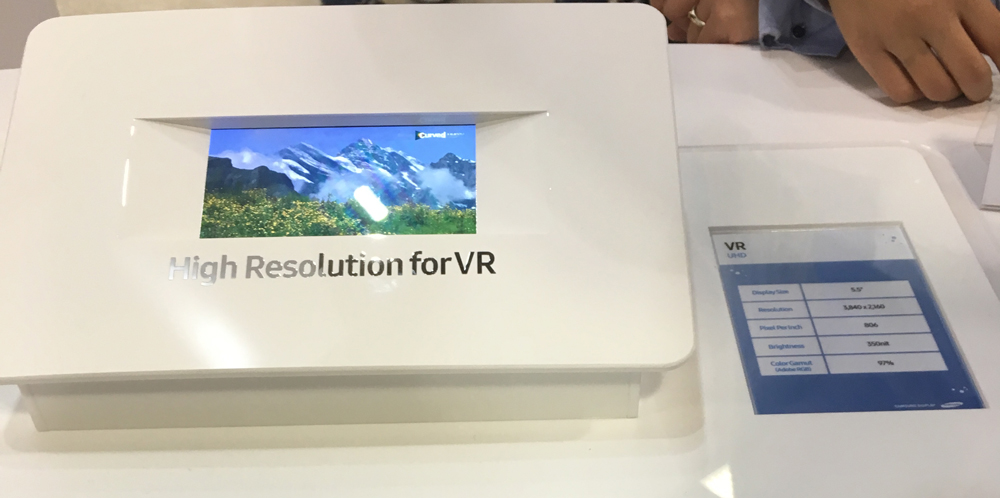Virtual reality is a new tech buzzword and key players are taking notice, with Samsung Display showing off a cutting-edge smartphone display technology at the Display Week conference in San Francisco last week. The tech promises to let people enjoy 3D content without needing any special glasses.
Samsung’s 4K VR display
Samsung’s tech enables clarity in virtual reality apps with 4K resolution of 3,840-by-2,160 pixels at 806ppi, a 44.7 percent increase in pixel density. By comparison, the iPhone 6s Plus rocks a 5.5-inch display that maxes out at 1,920-by-1,080 pixels.
A Samsung representative said the display shown at the show was a prototype.
Other crazy Samsung inventions
Facebook’s Oculus uses Samsung’s screen technology so it’s fairly safe to assume that a second-generation device could boost image resolution to 4K.
In addition, Samsung showcased a new “Bio Blue” technology that reduces blue light emission that could affect your sleep and lead to eye strain, and it presented “Lightfield” technology that might let you enjoy 3D without a special glasses.
The video above does not give the Lightfield technology full justice. Still, as you can see for yourself, the image shifts and uses the parallax effect as your point of view changes.
“What you cannot see is how you can focus on different planes of depth naturally – something that lightfield displays will bring to the VR ballgame in upcoming years,” UploadVR explains.
https://www.youtube.com/watch?v=eW_0aYguJ_E
Wait, why do we need 4K resolution on smartphones?
There has been a lot of discussion among pundits and watchers regarding having ultra high-resolution 4K screens on smartphone displays.
Some people point out that the human eye cannot discern the individual pixels on a smartphone display beyond the Retina-level density of 326 pixels per inch. On the other hand, in specific applications the increased pixel count is crucial and virtual reality is one of them, especially when used inside a VR headset.
The downside to having an UHD display on a smartphone includes the need for much beefier GPUs that use more power to drive those pixels.
Source: UploadVR
